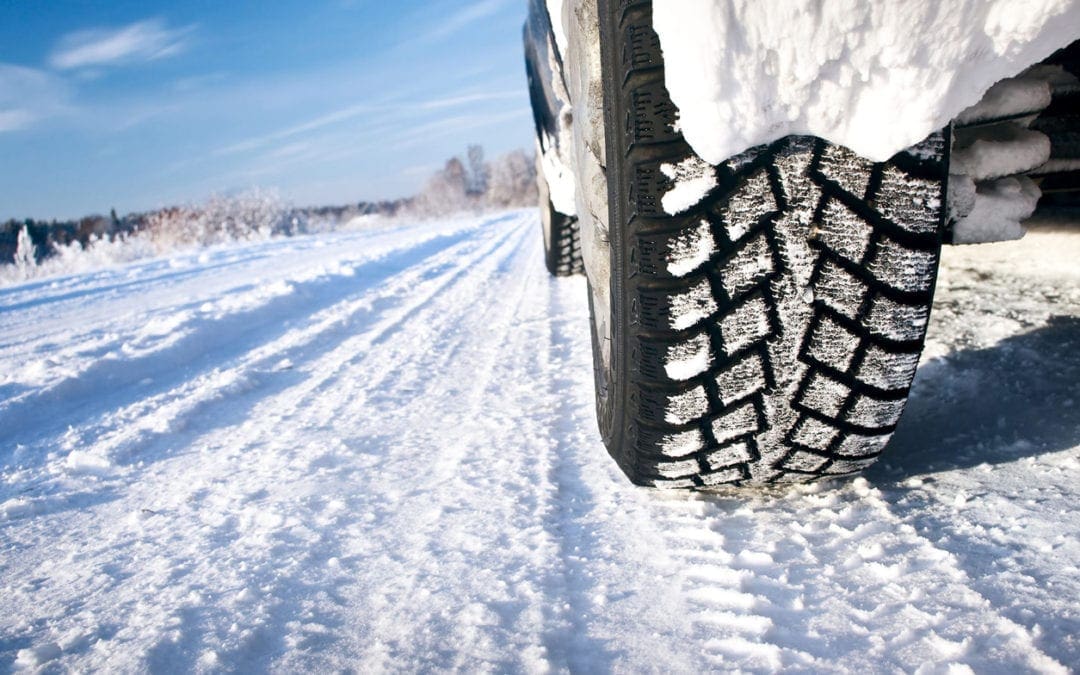Step 1: Make sure that your truck is prepared for winter driving.
Tires are the most important aspect of keeping your vehicle under control in snow and ice condition. Traction tires on the drive axle(s) of the truck with ample tread depth provides the best control in snow and ice conditions. The tread depth and condition of the steer axle tires is also vital in keeping the control of the steering.
If you are operating in areas with chain laws make sure the chains are in good condition and ready to be installed if needed. Mirrors and all glass in the truck should be clean for maximum visibility. Not sure what your states chain laws are go to:
Step 2: Lights On.
Turn on your lights to increase your visibility to other motorists.
Step 3: No Cruise Control.
Don’t use cruise control on snowy or icy roads.
Step 4: Bridges, Overpasses infrequently traveled roads.
Be especially careful on bridges, overpasses and infrequently traveled roads, which will freeze first. Even at temperatures above freezing, if the conditions are wet, you might encounter ice in shady areas or on exposed roadways like bridges.
Step 5: Don’t “pump” the brakes.
If your truck is equipped with ABS brakes do not “pump” the brakes.
Step 6: Drive slowly.
Driving too quickly is the main cause of winter accidents. Just because you are a large truck with a heavy load doesn’t mean that you’re invincible, be sure to drive slowly and carefully on snow and ice covered roads.
Step 7: Pay attention.
Maneuvers are more difficult to make in the snow. Be sure to anticipate what your next move is going to be to give yourself lots of room for turns and stopping.
Step 8: Don’t tailgate.
While tailgating is a bad idea under normal driving conditions, it is much, much worse in winter weather. Stopping takes much longer on snowy and icy roads than on dry pavement. Be sure to leave a lot of room between your vehicle and the one in front of you. A good rule of thumb is to leave four vehicle lengths between you and the vehicle in front of you for every 10 mph you are driving.
Step 9: Brake before making turns.
It is difficult to steer vehicles while applying the brakes in snowy conditions. So make sure to smoothly step on your truck’s brakes to reduce speed before entering turns. Once you have rounded the corner you can accelerate again.
Step 10: Drive smoothly.
Snowy and icy roads are much less forgiving than dry pavement. Make sure not to make any abrupt turns or stops when driving. Doing so will often cause your vehicle to lose control and skid out.
Step 11: Be familiar with your vehicle.
It is always a good idea to be familiar with your vehicle’s driving dynamics. This is especially true when driving on snow or ice. Also, be aware of the weight condition of your truck. As your load and weight diminish the handling of the truck in snow and ice will change.
Step 12: Learn how to control skids.
While it is best practiced in a driving school or on a closed course, it is not a bad idea to practice controlling skids in your vehicle so that you know how to react if it ever happens under real world driving conditions. When skidding, you actually need to go against your natural instincts and turn into the skid and accelerate. Taking your foot off of the brakes and accelerating gently during skids transfers your vehicle’s weight from the front to the rear and often helps vehicles to regain control.
Originally Posted on the Idealease Safety Bulletin


